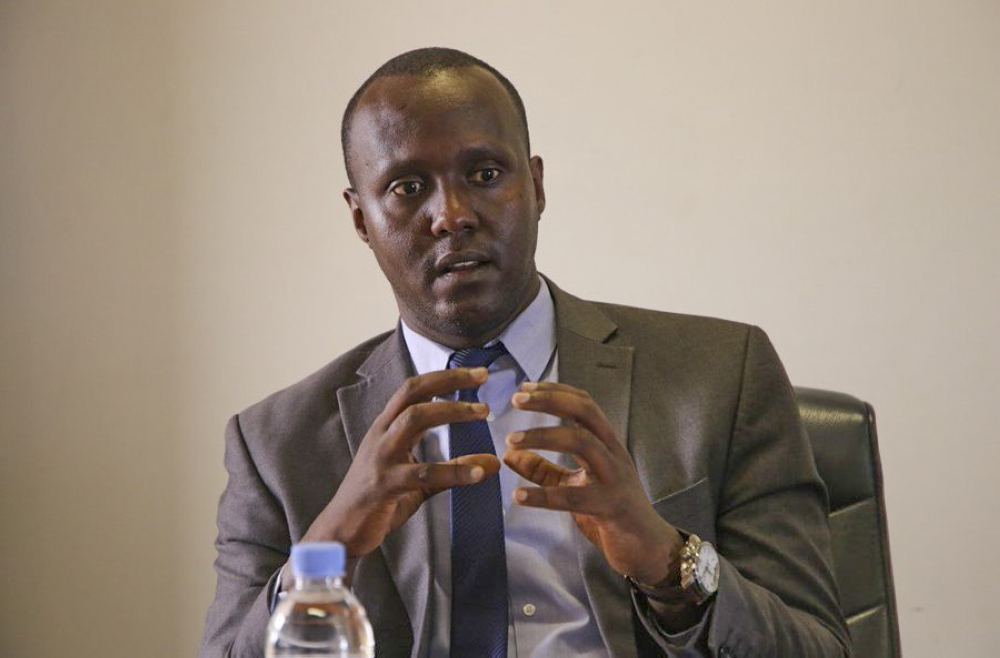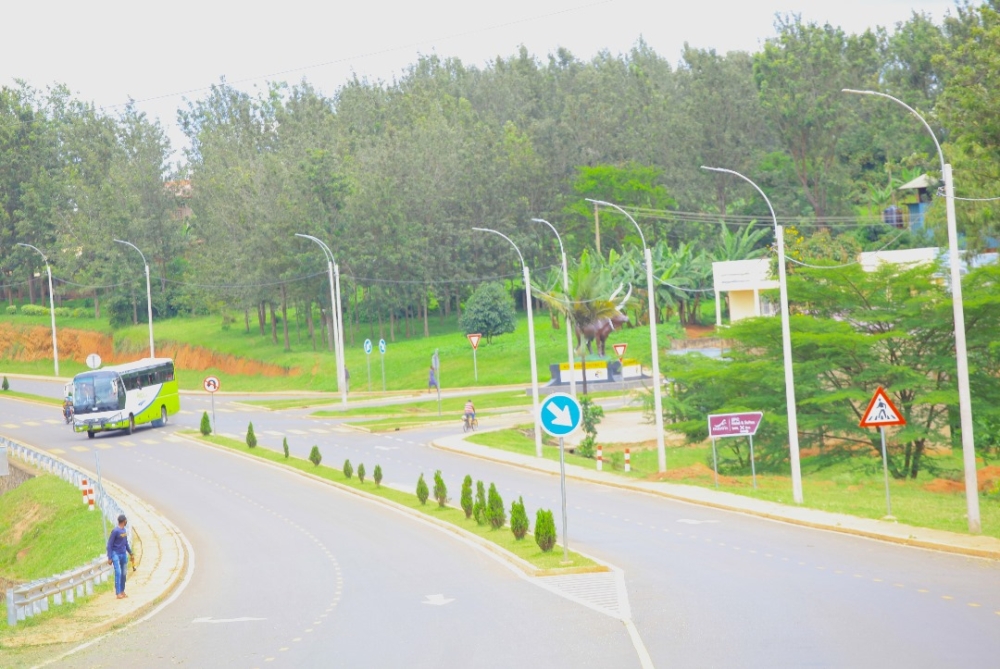

Rwanda’s transport sector is undergoing a transformation, driven by strategic investments from the African Development Bank (AfDB). Over the past decade, this partnership has delivered essential infrastructure, boosted regional trade, and improved connectivity for rural communities.
These efforts align with Rwanda’s Vision 2050 and the national commitment to inclusive, sustainable development. Speaking about the impact of AfDB funding, Imena Munyampenda, the Director General of the Rwanda Transport Development Agency (RTDA), highlights achievements and plans shaping the future of Rwanda’s transport sector.
Excerpts;
How has the AfDB’s funding advanced RTDA’s mission and contributed to achieving Rwanda’s Vision 2050 goals?
AfDB funding has played a crucial role in advancing Rwanda’s infrastructure goals by financing road upgrades, improving rural connectivity, and enhancing trade routes. These projects have catalyzed economic growth, reduced poverty, and facilitated regional integration, all of which are fundamental to Vision 2050. Beyond physical infrastructure, the funding has supported gender inclusion through community programs, improved road safety, and prioritized sustainability. Moreover, the technical assistance provided has strengthened RTDA’s ability to manage complex projects, ensuring that Rwanda’s development remains both resilient and inclusive.


What are the most significant outcomes achieved through AfDB-funded projects, and how have they impacted communities and the economy?
The past decade has seen substantial milestones in Rwanda’s transport infrastructure. Over 300 kilometers of roads have been constructed or rehabilitated, complemented by additional facilities such as two ports, two cross-border markets, 10 milk collection centers, 42 classrooms, three multifunctional women’s centers, and 10 water boreholes. These developments have had a profound economic impact, reducing vehicle operating costs, cutting travel times, and streamlining border crossing processes, with waiting times dropping from seven hours to just one.
Regional trade within the East African Community (EAC) has surged, with exchanges reaching $960 million by 2020. Rural accessibility has also improved dramatically, rising from 50% to 79.73%. Beyond infrastructure, these projects have created over 120,000 temporary jobs, with a focus on youth and women. Extensive community sensitization programs have reached over 229,000 people, addressing road safety, environmental concerns, and health awareness. Complementary programs have supported education and women’s empowerment, further embedding socio-economic benefits into the development process.
Can you highlight major large-scale infrastructure projects supported by AfDB and their broader impact on Rwanda’s transport sector?
Six major road projects stand out for their transformative impact on the transport sector: Rusizi–Bugarama, Crete Congo-Nil–Ntendezi, Cyangugu–Ntendezi–Mwityazo, Rubavu–Gisiza, Base–Gicumbi–Rukomo, and Kagitumba–Kayonza–Rusumo. These roads have transformed connectivity across Rwanda, fostering seamless cross-border trade, improving access to essential services, and boosting socio-economic development.
Together, these projects align with national development priorities, contributing to poverty reduction and strengthening Rwanda’s role as a regional trade hub. Their impact goes beyond economic gains, improving mobility for local communities, promoting regional integration, and advancing Rwanda’s vision of a modern, inclusive, and sustainable transport network.
How does RTDA measure the impact of these projects?
RTDA employs socio-economic assessments conducted at various stages of each project. These reports evaluate factors such as trade volume, accessibility, and overall quality of life improvements, ensuring the projects achieve both immediate objectives and long-term benefits for communities and the economy.
What challenges has RTDA faced during the implementation of AfDB-funded projects, and what lessons have emerged to improve future initiatives?
Implementing large-scale projects has not been without its challenges. Limited technical capacity, delays in securing counterpart funding, climate change impacts, and Rwanda’s mountainous terrain have all posed difficulties. These challenges have occasionally led to delays and cost overruns.
Key lessons include early planning and coordination to secure funding, integrating climate-resilient designs into infrastructure, and conducting thorough topographic surveys to anticipate potential obstacles. Strengthened capacity-building initiatives and collaboration with experts have proven essential for overcoming these challenges, ensuring smoother implementation in future projects.
How has the partnership with AfDB enhanced RTDA’s ability to deliver innovative, efficient, and sustainable transport solutions?
The partnership with AfDB has boosted RTDA’s operational efficiency and innovative approaches. Project management frameworks, procurement processes, and monitoring systems have been improved, enabling the agency to deliver projects more effectively. Innovations include the incorporation of climate-resilient designs and socio-economic components such as multifunctional women’s centers. These advancements have positioned RTDA to deliver impactful, future-ready infrastructure that supports Rwanda’s socio-economic transformation.
How do these projects contribute to Rwanda’s green transport vision and regional sustainability goals?
Sustainability is at the heart of these initiatives. AfDB-funded projects have prioritized climate-resilient infrastructure, eco-friendly construction practices, and the reduction of greenhouse gas emissions. Support for non-motorized transport options and community-inclusive components further reinforces Rwanda’s commitment to environmentally responsible development. These efforts ensure that the transport sector not only drives economic growth but does so in a way that safeguards the environment and benefits future generations.
What are RTDA’s priorities for the future, and how will AfDB funding help to support these long-term infrastructure plans?
RTDA’s vision, aligned with Rwanda’s National Strategy for Transformation (NST2), focuses on upgrading road networks, expanding rural feeder roads, improving road safety, and building climate-resilient infrastructure. These initiatives aim to enhance connectivity, boost trade, and drive socio-economic transformation. AfDB funding is vital in this regard, providing the financial and technical support necessary to realize flagship projects that contribute to Vision 2050.
From a regional perspective, how do AfDB-funded projects position Rwanda as a key player in the East African Community’s economic development?
AfDB-funded transport projects are central to Rwanda’s integration into the East African Community. By improving regional connectivity, they reduce transport costs, improve supply chains, and attract investment, positioning Rwanda as a key player in regional trade and logistics. The emphasis on sustainability ensures long-term viability, while inclusive development strategies create opportunities for local communities. These projects demonstrate Rwanda’s dedication to driving economic growth and regional cooperation while establishing a benchmark for sustainable infrastructure development


